Creating the perfect lighting in a cottage kitchen involves balancing functionality with aesthetic charm. Cottage kitchens are known for their cozy, warm, and inviting atmosphere, often characterized by natural materials, vintage elements, and a soft color palette. The right lighting can enhance these features, highlighting architectural details, adding warmth, and ensuring the kitchen is both beautiful and practical. When selecting lighting for a cottage kitchen, it’s important to consider how the fixtures will complement the overall design while providing adequate illumination for cooking, dining, and other activities.
One popular approach to cottage kitchen lighting is incorporating pendant lights. These fixtures are versatile and can be used to create a focal point in the kitchen, particularly when placed above a kitchen island or dining area. For a cottage-style kitchen, consider choosing pendant lights with a rustic or vintage design, such as those made from materials like wrought iron, distressed wood, or glass with a weathered finish. Soft, muted colors and classic shapes will further enhance the cottage aesthetic. Pendant lights also provide task lighting, which is essential in areas where food preparation and cooking take place.

Chandeliers can add a touch of elegance and charm to a cottage kitchen. While chandeliers are often associated with more formal spaces, there are many designs available that complement the relaxed, homey feel of a cottage kitchen. A wrought iron chandelier with candle-style lights, for example, can add a rustic yet refined element to the room. Alternatively, a chandelier made from natural materials like wood or wicker can bring a more casual, organic vibe to the space. When choosing a chandelier, consider the scale of the fixture to the kitchen size; a large, ornate chandelier might overwhelm a small cottage kitchen, while a simpler, smaller design will blend seamlessly with the cozy atmosphere.
Wall sconces are another excellent lighting option for cottage kitchens. These fixtures can be used to add ambient lighting to the room and highlight specific areas, such as a cozy breakfast nook or a charming open shelving display. Wall sconces with a vintage or farmhouse style, featuring materials like bronze, brass, or wood, can enhance the cottage look. They are also a great way to add layered lighting to the kitchen, providing additional illumination without the need for overhead lights. Sconces with adjustable arms offer added flexibility, allowing you to direct light where it’s needed most.

Under-cabinet lighting is a practical and stylish choice for cottage kitchens. This type of lighting not only provides essential task lighting for countertops but also adds a soft, ambient glow to the kitchen. LED strip lights or puck lights are commonly used for under-cabinet lighting, as they are discreet and energy-efficient. In a cottage kitchen, under-cabinet lighting can be particularly effective in highlighting natural wood cabinetry or a beautiful tile backsplash. Choosing warm, soft lighting will complement the cozy feel of the cottage style and ensure that the space feels welcoming and comfortable.
Another idea for cottage kitchen lighting is to incorporate vintage or antique fixtures. These pieces can add character and a sense of history to the kitchen, enhancing the cottage aesthetic. Whether you find a beautiful antique chandelier at a flea market or repurpose an old lantern as a pendant light, vintage fixtures can serve as conversation pieces and focal points in the kitchen. If authentic antiques are not available or within budget, many manufacturers offer reproduction lighting that captures the look and feel of vintage pieces while providing modern functionality.

For a truly cozy and intimate cottage kitchen, consider using candlelight or lanterns as part of your lighting scheme. While these are not practical for primary lighting, they can add a warm, ambient glow to the room, perfect for creating a relaxing atmosphere during meals or evening gatherings. Placing candles or lanterns on open shelves, windowsills, or as a centerpiece on the kitchen table can enhance the cottage charm. Opt for lanterns made from materials like metal, glass, or wood, and choose candles in soft, warm colors to complement the rest of the kitchen’s decor.
Natural light is an important element in cottage kitchen lighting. If your kitchen has large windows or a skylight, take advantage of the natural light to brighten the space and make it feel more open and airy. Light, sheer curtains or Roman shades can filter the sunlight while maintaining privacy and adding a touch of softness to the room. Natural light not only enhances the cottage aesthetic by bringing the outdoors in but also reduces the need for artificial lighting during the day. To maximize the natural light, keep window treatments minimal and use reflective surfaces like glass or light-colored tile to bounce light around the room.
In addition to the primary light fixtures, consider adding accent lighting to highlight architectural features or decorative elements in the cottage kitchen. For example, you could use recessed lighting to draw attention to a beamed ceiling or a beautiful farmhouse sink. String lights or fairy lights can also be a whimsical addition, adding a touch of magic and charm to the kitchen. These lights can be draped along open shelving, around a window, or across the top of cabinetry to create a cozy, inviting atmosphere.

Track lighting is another option that can work well in a cottage kitchen, especially in areas where more focused, directional lighting is needed. While track lighting is often associated with modern or industrial styles, there are designs available that can suit a cottage kitchen. Look for track lighting with a rustic or vintage finish, such as oil-rubbed bronze or weathered metal, and choose fixtures with adjustable heads to direct light exactly where it’s needed. Track lighting is particularly useful in kitchens with vaulted or beamed ceilings, as it can be mounted to follow the lines of the architecture.
Incorporating different lighting levels in a cottage kitchen is essential for creating a well-lit, functional space. Combining overhead lighting, task lighting, and accent lighting ensures that the kitchen is bright and practical for cooking while maintaining a warm, inviting atmosphere. Dimmer switches can be a valuable addition, allowing you to adjust the brightness of the lights to suit different activities and times of day. This flexibility is particularly useful in a cottage kitchen, where creating a cozy ambiance is just as important as ensuring sufficient light for meal preparation.
A key consideration in cottage kitchen lighting is the color temperature of the bulbs. Warm white or soft white bulbs (with a color temperature of around 2700K to 3000K) are ideal for creating the cozy, inviting feel characteristic of cottage kitchens. Avoid cool white or daylight bulbs, as these can create a harsh, clinical atmosphere that detracts from the warm, homely vibe. LED bulbs are a great choice for energy efficiency and longevity, and they are available in a range of color temperatures to suit your needs.
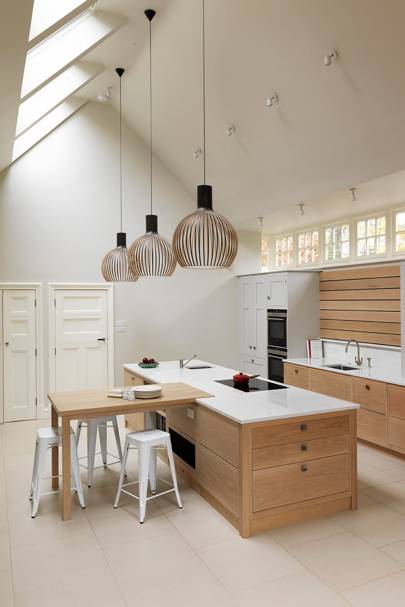
Mixing and matching different types of light fixtures can add visual interest and depth to a cottage kitchen. For example, you could combine a rustic wrought iron chandelier with vintage pendant lights and industrial-style sconces to create a layered, eclectic look. The key to making different fixtures work together is to choose pieces with complementary finishes, colors, and styles that align with the overall cottage theme. This approach allows you to personalize the space while maintaining a cohesive design.
Lighting placement is also crucial in a cottage kitchen. Consider where shadows might fall and how the lighting can be positioned to eliminate dark corners or areas where light is needed most. For example, placing pendant lights over a kitchen island or dining table ensures that these key areas are well-lit, while under-cabinet lighting illuminates work surfaces without casting shadows. Wall sconces can be placed strategically to add light to dim corners or to highlight architectural details, creating a balanced and well-lit environment.
Finally, the use of reflective and light-colored surfaces in the kitchen can enhance the effectiveness of your lighting. Light-colored walls, cabinetry, and countertops can reflect light and make the space feel larger and brighter. Mirrors or glass-fronted cabinets can also help bounce light around the room. In a cottage kitchen, where a cozy atmosphere is key, these design choices can enhance the warmth and brightness of the space, ensuring that it feels both inviting and functional.
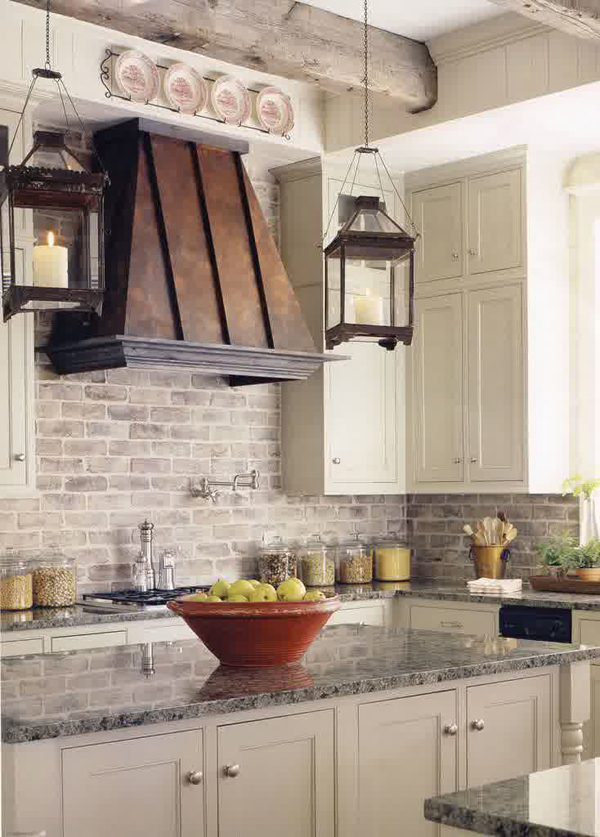 What type of lighting is best for a cottage kitchen?
What type of lighting is best for a cottage kitchen?
The best lighting for a cottage kitchen combines function and charm. Pendant lights, chandeliers, wall sconces, and under-cabinet lighting are all excellent choices, with vintage or rustic designs enhancing the cottage aesthetic. Natural materials like wood, wrought iron, and glass work well, and warm, soft lighting creates the cozy, inviting atmosphere typical of cottage kitchens. Layering different types of lighting ensures that the kitchen is well-lit and practical while maintaining its warmth and charm.
How can I incorporate vintage lighting fixtures into my cottage kitchen?
Vintage lighting fixtures can add character and a sense of history to a cottage kitchen. Look for antique chandeliers, sconces, or pendant lights at flea markets, antique shops, or online marketplaces. If authentic vintage pieces are hard to find or out of budget, many manufacturers offer reproduction lighting that captures the look of vintage fixtures while providing modern functionality. When incorporating vintage lighting, ensure that the fixtures complement the overall design of your kitchen, blending seamlessly with other elements like cabinetry, countertops, and hardware.
What color temperature should I use for cottage kitchen lighting?
Warm white or soft white bulbs with a color temperature of around 2700K to 3000K are ideal for cottage kitchen lighting. These bulbs create a cozy, inviting atmosphere that enhances the warm, homely feel characteristic of cottage kitchens. Avoid cool white or daylight bulbs, as they can produce a harsh, clinical light that detracts from the cottage aesthetic. LED bulbs are a good choice for energy efficiency and are available in various color temperatures to suit your needs.
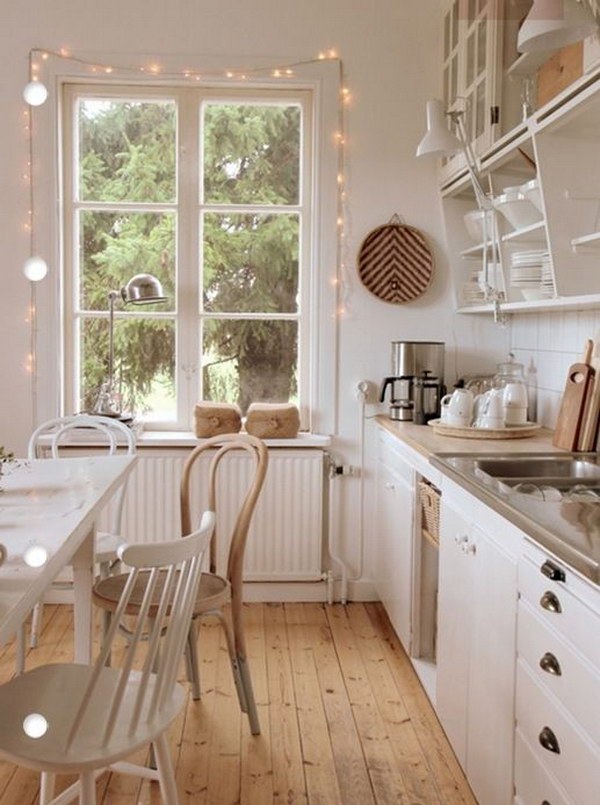 How can I maximize natural light in my cottage kitchen?
How can I maximize natural light in my cottage kitchen?
To maximize natural light in a cottage kitchen, use light, sheer curtains or Roman shades that allow sunlight to filter through while maintaining privacy. Consider the placement of windows and ensure that they are not obstructed by heavy, dark window treatments or large pieces of furniture. Reflective surfaces like glass-fronted cabinets, light-colored walls, and countertops can help bounce light around the room, making the space feel larger and brighter. Additionally, keeping window treatments minimal will allow more natural light to flood the kitchen, enhancing its warmth and inviting atmosphere.
What are some budget-friendly lighting options for a cottage kitchen?
Budget-friendly lighting options for a cottage kitchen include DIY solutions like repurposing vintage lanterns as pendant lights or using string lights to add a whimsical touch. Simple wall sconces or under-cabinet LED strips can be affordable yet effective in providing additional light where needed. Shopping for lighting fixtures at second-hand stores, flea markets, or online marketplaces can yield unique, affordable finds that complement the cottage aesthetic. Additionally, mixing high and low-end fixtures can create a layered, cohesive look without breaking the bank.
Can I mix different types of lighting fixtures in a cottage kitchen?
Yes, mixing different types of lighting fixtures can add visual interest and depth to a cottage kitchen. The key is to choose fixtures with complementary finishes, colors, and styles that align with the overall cottage theme. For example, you could combine a rustic wrought iron chandelier with vintage-inspired pendant lights and industrial-style sconces. This approach allows you to personalize the space while maintaining a cohesive design. Mixing and matching fixtures also helps to layer lighting, ensuring that the kitchen is well-lit and functional while retaining its warmth and charm.
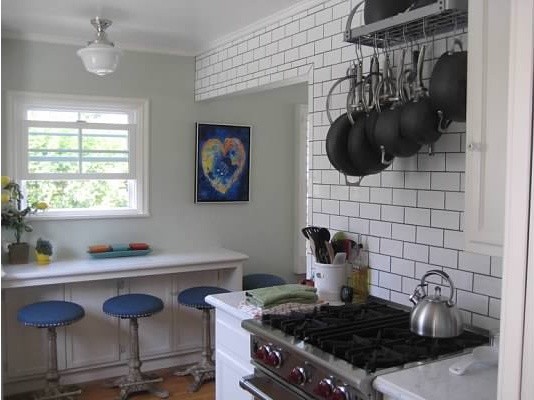
Best Amazing Kitchen Lighting Ideas You Have To Try

Fantastic Coastal Kitchen Designs
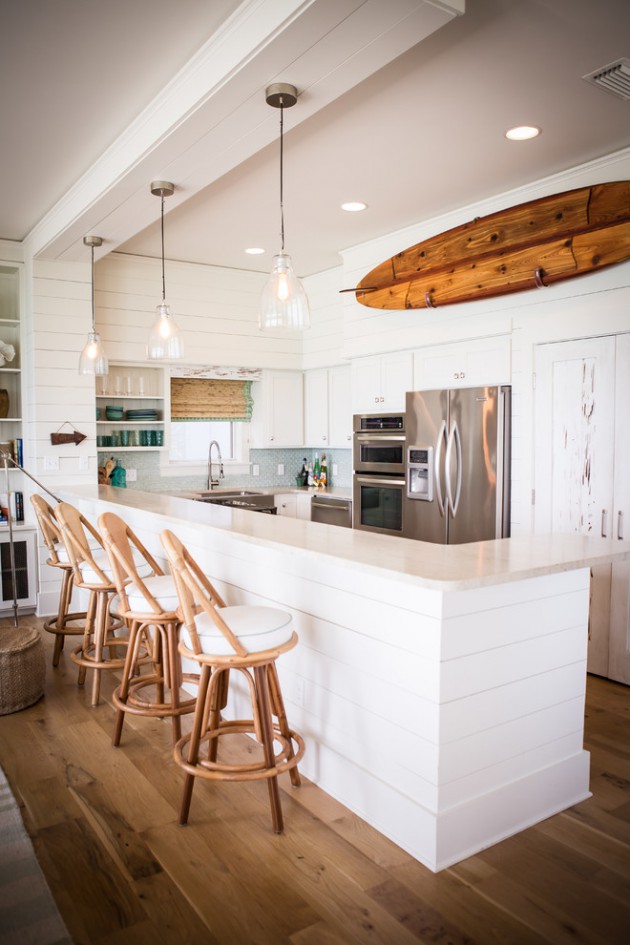
Small Cottage Style Bungalow House with Big Design Ideas

Kitchen Lighting Ideas

Related Posts:
 Chandeliers can add a touch of elegance and charm to a cottage kitchen. While chandeliers are often associated with more formal spaces, there are many designs available that complement the relaxed, homey feel of a cottage kitchen. A wrought iron chandelier with candle-style lights, for example, can add a rustic yet refined element to the room. Alternatively, a chandelier made from natural materials like wood or wicker can bring a more casual, organic vibe to the space. When choosing a chandelier, consider the scale of the fixture to the kitchen size; a large, ornate chandelier might overwhelm a small cottage kitchen, while a simpler, smaller design will blend seamlessly with the cozy atmosphere.
Wall sconces are another excellent lighting option for cottage kitchens. These fixtures can be used to add ambient lighting to the room and highlight specific areas, such as a cozy breakfast nook or a charming open shelving display. Wall sconces with a vintage or farmhouse style, featuring materials like bronze, brass, or wood, can enhance the cottage look. They are also a great way to add layered lighting to the kitchen, providing additional illumination without the need for overhead lights. Sconces with adjustable arms offer added flexibility, allowing you to direct light where it’s needed most.
Chandeliers can add a touch of elegance and charm to a cottage kitchen. While chandeliers are often associated with more formal spaces, there are many designs available that complement the relaxed, homey feel of a cottage kitchen. A wrought iron chandelier with candle-style lights, for example, can add a rustic yet refined element to the room. Alternatively, a chandelier made from natural materials like wood or wicker can bring a more casual, organic vibe to the space. When choosing a chandelier, consider the scale of the fixture to the kitchen size; a large, ornate chandelier might overwhelm a small cottage kitchen, while a simpler, smaller design will blend seamlessly with the cozy atmosphere.
Wall sconces are another excellent lighting option for cottage kitchens. These fixtures can be used to add ambient lighting to the room and highlight specific areas, such as a cozy breakfast nook or a charming open shelving display. Wall sconces with a vintage or farmhouse style, featuring materials like bronze, brass, or wood, can enhance the cottage look. They are also a great way to add layered lighting to the kitchen, providing additional illumination without the need for overhead lights. Sconces with adjustable arms offer added flexibility, allowing you to direct light where it’s needed most.
 Under-cabinet lighting is a practical and stylish choice for cottage kitchens. This type of lighting not only provides essential task lighting for countertops but also adds a soft, ambient glow to the kitchen. LED strip lights or puck lights are commonly used for under-cabinet lighting, as they are discreet and energy-efficient. In a cottage kitchen, under-cabinet lighting can be particularly effective in highlighting natural wood cabinetry or a beautiful tile backsplash. Choosing warm, soft lighting will complement the cozy feel of the cottage style and ensure that the space feels welcoming and comfortable.
Another idea for cottage kitchen lighting is to incorporate vintage or antique fixtures. These pieces can add character and a sense of history to the kitchen, enhancing the cottage aesthetic. Whether you find a beautiful antique chandelier at a flea market or repurpose an old lantern as a pendant light, vintage fixtures can serve as conversation pieces and focal points in the kitchen. If authentic antiques are not available or within budget, many manufacturers offer reproduction lighting that captures the look and feel of vintage pieces while providing modern functionality.
Under-cabinet lighting is a practical and stylish choice for cottage kitchens. This type of lighting not only provides essential task lighting for countertops but also adds a soft, ambient glow to the kitchen. LED strip lights or puck lights are commonly used for under-cabinet lighting, as they are discreet and energy-efficient. In a cottage kitchen, under-cabinet lighting can be particularly effective in highlighting natural wood cabinetry or a beautiful tile backsplash. Choosing warm, soft lighting will complement the cozy feel of the cottage style and ensure that the space feels welcoming and comfortable.
Another idea for cottage kitchen lighting is to incorporate vintage or antique fixtures. These pieces can add character and a sense of history to the kitchen, enhancing the cottage aesthetic. Whether you find a beautiful antique chandelier at a flea market or repurpose an old lantern as a pendant light, vintage fixtures can serve as conversation pieces and focal points in the kitchen. If authentic antiques are not available or within budget, many manufacturers offer reproduction lighting that captures the look and feel of vintage pieces while providing modern functionality.
 Track lighting is another option that can work well in a cottage kitchen, especially in areas where more focused, directional lighting is needed. While track lighting is often associated with modern or industrial styles, there are designs available that can suit a cottage kitchen. Look for track lighting with a rustic or vintage finish, such as oil-rubbed bronze or weathered metal, and choose fixtures with adjustable heads to direct light exactly where it’s needed. Track lighting is particularly useful in kitchens with vaulted or beamed ceilings, as it can be mounted to follow the lines of the architecture.
Incorporating different lighting levels in a cottage kitchen is essential for creating a well-lit, functional space. Combining overhead lighting, task lighting, and accent lighting ensures that the kitchen is bright and practical for cooking while maintaining a warm, inviting atmosphere. Dimmer switches can be a valuable addition, allowing you to adjust the brightness of the lights to suit different activities and times of day. This flexibility is particularly useful in a cottage kitchen, where creating a cozy ambiance is just as important as ensuring sufficient light for meal preparation.
A key consideration in cottage kitchen lighting is the color temperature of the bulbs. Warm white or soft white bulbs (with a color temperature of around 2700K to 3000K) are ideal for creating the cozy, inviting feel characteristic of cottage kitchens. Avoid cool white or daylight bulbs, as these can create a harsh, clinical atmosphere that detracts from the warm, homely vibe. LED bulbs are a great choice for energy efficiency and longevity, and they are available in a range of color temperatures to suit your needs.
Track lighting is another option that can work well in a cottage kitchen, especially in areas where more focused, directional lighting is needed. While track lighting is often associated with modern or industrial styles, there are designs available that can suit a cottage kitchen. Look for track lighting with a rustic or vintage finish, such as oil-rubbed bronze or weathered metal, and choose fixtures with adjustable heads to direct light exactly where it’s needed. Track lighting is particularly useful in kitchens with vaulted or beamed ceilings, as it can be mounted to follow the lines of the architecture.
Incorporating different lighting levels in a cottage kitchen is essential for creating a well-lit, functional space. Combining overhead lighting, task lighting, and accent lighting ensures that the kitchen is bright and practical for cooking while maintaining a warm, inviting atmosphere. Dimmer switches can be a valuable addition, allowing you to adjust the brightness of the lights to suit different activities and times of day. This flexibility is particularly useful in a cottage kitchen, where creating a cozy ambiance is just as important as ensuring sufficient light for meal preparation.
A key consideration in cottage kitchen lighting is the color temperature of the bulbs. Warm white or soft white bulbs (with a color temperature of around 2700K to 3000K) are ideal for creating the cozy, inviting feel characteristic of cottage kitchens. Avoid cool white or daylight bulbs, as these can create a harsh, clinical atmosphere that detracts from the warm, homely vibe. LED bulbs are a great choice for energy efficiency and longevity, and they are available in a range of color temperatures to suit your needs.
 Mixing and matching different types of light fixtures can add visual interest and depth to a cottage kitchen. For example, you could combine a rustic wrought iron chandelier with vintage pendant lights and industrial-style sconces to create a layered, eclectic look. The key to making different fixtures work together is to choose pieces with complementary finishes, colors, and styles that align with the overall cottage theme. This approach allows you to personalize the space while maintaining a cohesive design.
Lighting placement is also crucial in a cottage kitchen. Consider where shadows might fall and how the lighting can be positioned to eliminate dark corners or areas where light is needed most. For example, placing pendant lights over a kitchen island or dining table ensures that these key areas are well-lit, while under-cabinet lighting illuminates work surfaces without casting shadows. Wall sconces can be placed strategically to add light to dim corners or to highlight architectural details, creating a balanced and well-lit environment.
Finally, the use of reflective and light-colored surfaces in the kitchen can enhance the effectiveness of your lighting. Light-colored walls, cabinetry, and countertops can reflect light and make the space feel larger and brighter. Mirrors or glass-fronted cabinets can also help bounce light around the room. In a cottage kitchen, where a cozy atmosphere is key, these design choices can enhance the warmth and brightness of the space, ensuring that it feels both inviting and functional.
Mixing and matching different types of light fixtures can add visual interest and depth to a cottage kitchen. For example, you could combine a rustic wrought iron chandelier with vintage pendant lights and industrial-style sconces to create a layered, eclectic look. The key to making different fixtures work together is to choose pieces with complementary finishes, colors, and styles that align with the overall cottage theme. This approach allows you to personalize the space while maintaining a cohesive design.
Lighting placement is also crucial in a cottage kitchen. Consider where shadows might fall and how the lighting can be positioned to eliminate dark corners or areas where light is needed most. For example, placing pendant lights over a kitchen island or dining table ensures that these key areas are well-lit, while under-cabinet lighting illuminates work surfaces without casting shadows. Wall sconces can be placed strategically to add light to dim corners or to highlight architectural details, creating a balanced and well-lit environment.
Finally, the use of reflective and light-colored surfaces in the kitchen can enhance the effectiveness of your lighting. Light-colored walls, cabinetry, and countertops can reflect light and make the space feel larger and brighter. Mirrors or glass-fronted cabinets can also help bounce light around the room. In a cottage kitchen, where a cozy atmosphere is key, these design choices can enhance the warmth and brightness of the space, ensuring that it feels both inviting and functional.
 What type of lighting is best for a cottage kitchen?
The best lighting for a cottage kitchen combines function and charm. Pendant lights, chandeliers, wall sconces, and under-cabinet lighting are all excellent choices, with vintage or rustic designs enhancing the cottage aesthetic. Natural materials like wood, wrought iron, and glass work well, and warm, soft lighting creates the cozy, inviting atmosphere typical of cottage kitchens. Layering different types of lighting ensures that the kitchen is well-lit and practical while maintaining its warmth and charm.
How can I incorporate vintage lighting fixtures into my cottage kitchen?
Vintage lighting fixtures can add character and a sense of history to a cottage kitchen. Look for antique chandeliers, sconces, or pendant lights at flea markets, antique shops, or online marketplaces. If authentic vintage pieces are hard to find or out of budget, many manufacturers offer reproduction lighting that captures the look of vintage fixtures while providing modern functionality. When incorporating vintage lighting, ensure that the fixtures complement the overall design of your kitchen, blending seamlessly with other elements like cabinetry, countertops, and hardware.
What color temperature should I use for cottage kitchen lighting?
Warm white or soft white bulbs with a color temperature of around 2700K to 3000K are ideal for cottage kitchen lighting. These bulbs create a cozy, inviting atmosphere that enhances the warm, homely feel characteristic of cottage kitchens. Avoid cool white or daylight bulbs, as they can produce a harsh, clinical light that detracts from the cottage aesthetic. LED bulbs are a good choice for energy efficiency and are available in various color temperatures to suit your needs.
What type of lighting is best for a cottage kitchen?
The best lighting for a cottage kitchen combines function and charm. Pendant lights, chandeliers, wall sconces, and under-cabinet lighting are all excellent choices, with vintage or rustic designs enhancing the cottage aesthetic. Natural materials like wood, wrought iron, and glass work well, and warm, soft lighting creates the cozy, inviting atmosphere typical of cottage kitchens. Layering different types of lighting ensures that the kitchen is well-lit and practical while maintaining its warmth and charm.
How can I incorporate vintage lighting fixtures into my cottage kitchen?
Vintage lighting fixtures can add character and a sense of history to a cottage kitchen. Look for antique chandeliers, sconces, or pendant lights at flea markets, antique shops, or online marketplaces. If authentic vintage pieces are hard to find or out of budget, many manufacturers offer reproduction lighting that captures the look of vintage fixtures while providing modern functionality. When incorporating vintage lighting, ensure that the fixtures complement the overall design of your kitchen, blending seamlessly with other elements like cabinetry, countertops, and hardware.
What color temperature should I use for cottage kitchen lighting?
Warm white or soft white bulbs with a color temperature of around 2700K to 3000K are ideal for cottage kitchen lighting. These bulbs create a cozy, inviting atmosphere that enhances the warm, homely feel characteristic of cottage kitchens. Avoid cool white or daylight bulbs, as they can produce a harsh, clinical light that detracts from the cottage aesthetic. LED bulbs are a good choice for energy efficiency and are available in various color temperatures to suit your needs.
 How can I maximize natural light in my cottage kitchen?
To maximize natural light in a cottage kitchen, use light, sheer curtains or Roman shades that allow sunlight to filter through while maintaining privacy. Consider the placement of windows and ensure that they are not obstructed by heavy, dark window treatments or large pieces of furniture. Reflective surfaces like glass-fronted cabinets, light-colored walls, and countertops can help bounce light around the room, making the space feel larger and brighter. Additionally, keeping window treatments minimal will allow more natural light to flood the kitchen, enhancing its warmth and inviting atmosphere.
What are some budget-friendly lighting options for a cottage kitchen?
Budget-friendly lighting options for a cottage kitchen include DIY solutions like repurposing vintage lanterns as pendant lights or using string lights to add a whimsical touch. Simple wall sconces or under-cabinet LED strips can be affordable yet effective in providing additional light where needed. Shopping for lighting fixtures at second-hand stores, flea markets, or online marketplaces can yield unique, affordable finds that complement the cottage aesthetic. Additionally, mixing high and low-end fixtures can create a layered, cohesive look without breaking the bank.
Can I mix different types of lighting fixtures in a cottage kitchen?
Yes, mixing different types of lighting fixtures can add visual interest and depth to a cottage kitchen. The key is to choose fixtures with complementary finishes, colors, and styles that align with the overall cottage theme. For example, you could combine a rustic wrought iron chandelier with vintage-inspired pendant lights and industrial-style sconces. This approach allows you to personalize the space while maintaining a cohesive design. Mixing and matching fixtures also helps to layer lighting, ensuring that the kitchen is well-lit and functional while retaining its warmth and charm.
How can I maximize natural light in my cottage kitchen?
To maximize natural light in a cottage kitchen, use light, sheer curtains or Roman shades that allow sunlight to filter through while maintaining privacy. Consider the placement of windows and ensure that they are not obstructed by heavy, dark window treatments or large pieces of furniture. Reflective surfaces like glass-fronted cabinets, light-colored walls, and countertops can help bounce light around the room, making the space feel larger and brighter. Additionally, keeping window treatments minimal will allow more natural light to flood the kitchen, enhancing its warmth and inviting atmosphere.
What are some budget-friendly lighting options for a cottage kitchen?
Budget-friendly lighting options for a cottage kitchen include DIY solutions like repurposing vintage lanterns as pendant lights or using string lights to add a whimsical touch. Simple wall sconces or under-cabinet LED strips can be affordable yet effective in providing additional light where needed. Shopping for lighting fixtures at second-hand stores, flea markets, or online marketplaces can yield unique, affordable finds that complement the cottage aesthetic. Additionally, mixing high and low-end fixtures can create a layered, cohesive look without breaking the bank.
Can I mix different types of lighting fixtures in a cottage kitchen?
Yes, mixing different types of lighting fixtures can add visual interest and depth to a cottage kitchen. The key is to choose fixtures with complementary finishes, colors, and styles that align with the overall cottage theme. For example, you could combine a rustic wrought iron chandelier with vintage-inspired pendant lights and industrial-style sconces. This approach allows you to personalize the space while maintaining a cohesive design. Mixing and matching fixtures also helps to layer lighting, ensuring that the kitchen is well-lit and functional while retaining its warmth and charm.




 Related Posts:
Related Posts: